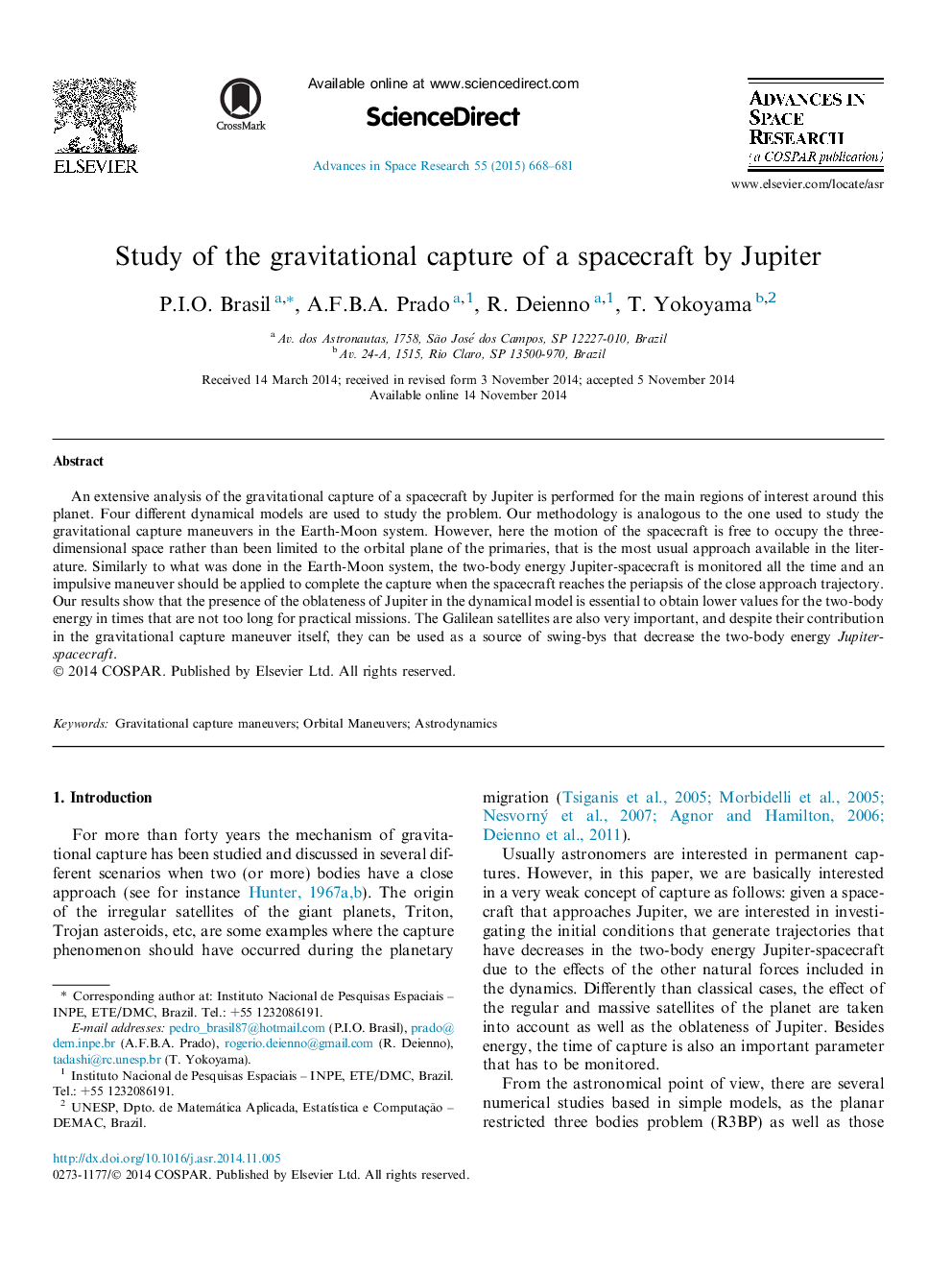| Article ID | Journal | Published Year | Pages | File Type |
|---|---|---|---|---|
| 1764309 | Advances in Space Research | 2015 | 14 Pages |
Abstract
An extensive analysis of the gravitational capture of a spacecraft by Jupiter is performed for the main regions of interest around this planet. Four different dynamical models are used to study the problem. Our methodology is analogous to the one used to study the gravitational capture maneuvers in the Earth-Moon system. However, here the motion of the spacecraft is free to occupy the three-dimensional space rather than been limited to the orbital plane of the primaries, that is the most usual approach available in the literature. Similarly to what was done in the Earth-Moon system, the two-body energy Jupiter-spacecraft is monitored all the time and an impulsive maneuver should be applied to complete the capture when the spacecraft reaches the periapsis of the close approach trajectory. Our results show that the presence of the oblateness of Jupiter in the dynamical model is essential to obtain lower values for the two-body energy in times that are not too long for practical missions. The Galilean satellites are also very important, and despite their contribution in the gravitational capture maneuver itself, they can be used as a source of swing-bys that decrease the two-body energy Jupiter-spacecraft.
Keywords
Related Topics
Physical Sciences and Engineering
Earth and Planetary Sciences
Space and Planetary Science
Authors
P.I.O. Brasil, A.F.B.A. Prado, R. Deienno, T. Yokoyama,
